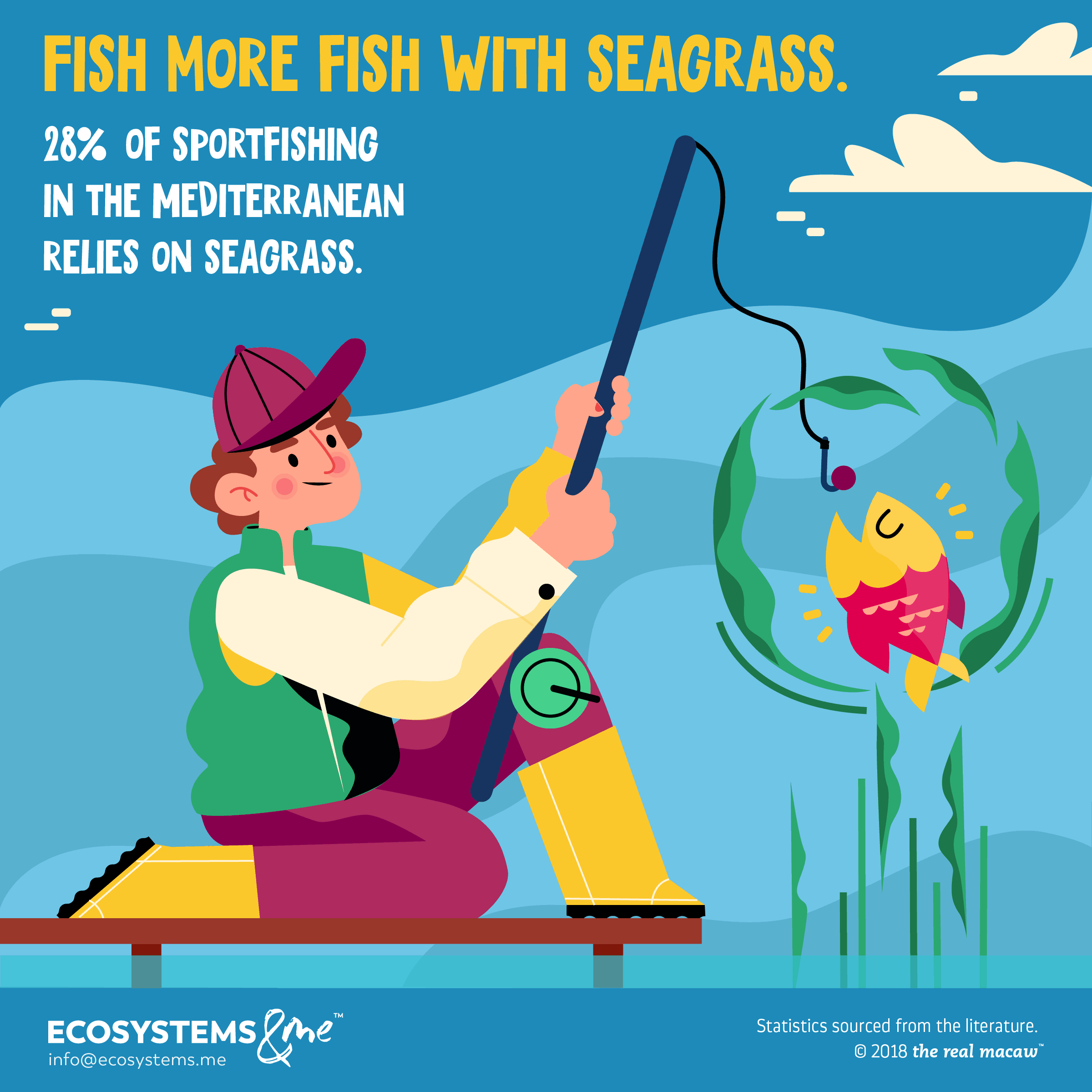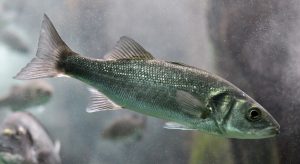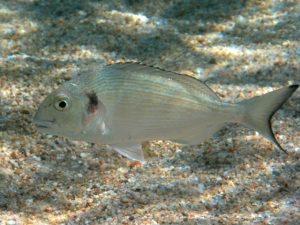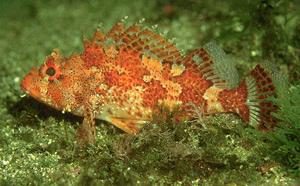
What fish do you find in the Mediterranean Sea?
Seabass
Ahh, the seabass. In the Mediterranean Sea, this usually means the European bass or the spotted bass. The European bass is one of the most important species in the Mediterranean, and it’s big. Usually, it’s around half a metre long, but it can hit as much as 1 metre and 26 pounds. It usually lives in coastal habitats, like rivers, lagoons, and estuaries, but it goes offshore during the winter. It’s also a beautiful, silver fish. (Photo credit: Wikipedia) As for the spotted seabass, it’s not quite as highly prized, but it’s still relatively famous, and similar looking. It’s between 30-70 cm long, and it eats a lot of other aquatic animals, like shrimp, molluscs, and smaller fish.
As for the spotted seabass, it’s not quite as highly prized, but it’s still relatively famous, and similar looking. It’s between 30-70 cm long, and it eats a lot of other aquatic animals, like shrimp, molluscs, and smaller fish.
Porgies and sea breams
There are a lot of fish in this group. Most of them are commonly called seabreams, and there are tons of them: black, blackspot, red, saddled, gilthead, axilliary, two-banded, and so forth. Some of them are also called porgies, like the red porgy, aka the common seabream. Fun fact: many of them turn from male to female as they get older and lay eggs.
They’re all pretty famous food fish, but the gilthead bream is generally the best tasting, and the most prized. It can get reasonably big, up to 70 cm, or 16 pounds. It usually lives in very shallow waters. And it spends a lot of time in seagrass beds. (Photo credit: Wikipedia) Another fun fact: the entire bream family of Sparidae was named after this fish.
Another fun fact: the entire bream family of Sparidae was named after this fish.
2. The not-so-famous, but still quirky
Garfish
Oh, garfish, how do I love thee? Let me count the ways: boiled, fried, baked, grilled, or smoked…
The garfish is long and thin, and kind of looks like a needle – especially because it has a long, pointy snout. Weirdly, its bones are green, but that doesn’t stop it from being eaten in basically any way it can be cooked.
It lives close to the water surface, and migrates to shallow waters during spring months, to eelgrass (a type of seagrass) in early summer, and back to the open sea in fall.
(Not to be confused with the gar, a freshwater fish!)
Pouting
AKA the pout. A pretty common and small fish that usually hangs out in rocky and shallow areas, no more than 300 metres offshore. Technically, they’re part of the cod family. But cod (and bass and eels) also eat them because they’re so small – usually only around 30 cm long. They also don’t live very long, only around 4 years.
3. The confusing
Cuttlefish
Cuttlefish is just a fancy name for squid. Ok, well they’re not really squid, but they’re similar. The European common cuttlefish can weigh as much as 4 kgs, and hangs out close to shore, usually near sandy and muddy seabeds.
It can camouflage itself by changing both the colour and texture of its skin. And it has a built-in water cannon that it can use to propel themselves away from danger. (Wouldn’t you love one of those?)
Also, cuttlefish aren’t just food. Pet birds love to chew on their bones, and their black ink is used in art and as food dye.
Scorpionfish
There are a bunch of different subspecies, but one of the most famous is the red scorpionfish, which looks like a giant blob of red goo with spikes. Seriously, check it out. (Photo credit: Wikipedia) This is the largest East Atlantic scorpionfish – it can reach up to 3 kgs, or almost 7 pounds. It lives in saltwater, especially where there are burrows, caves, and muddy bottoms. Maybe most importantly, it’s a traditional ingredient in Marseillaise bouillabaisse.
This is the largest East Atlantic scorpionfish – it can reach up to 3 kgs, or almost 7 pounds. It lives in saltwater, especially where there are burrows, caves, and muddy bottoms. Maybe most importantly, it’s a traditional ingredient in Marseillaise bouillabaisse.
Rockfish
This is confusing, because these are kind of the same as scorpionfish. But there’s always the Madeira rockfish, which lives in the eastern Atlantic and the Western Mediterranean Sea. It’s not that big, only 14cm long or so. So as you might expect, it doesn’t go far offshore – usually, it stays in waters that are between 20-40 metres deep. It looks pretty similar to the scorpionfish above, just a little prettier. (Photo credit: Wikipedia)
